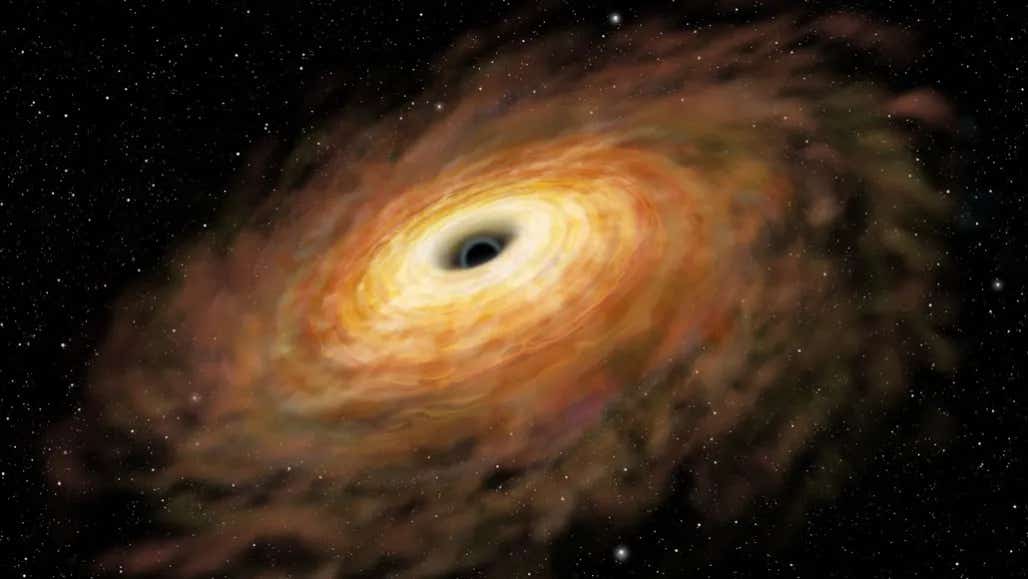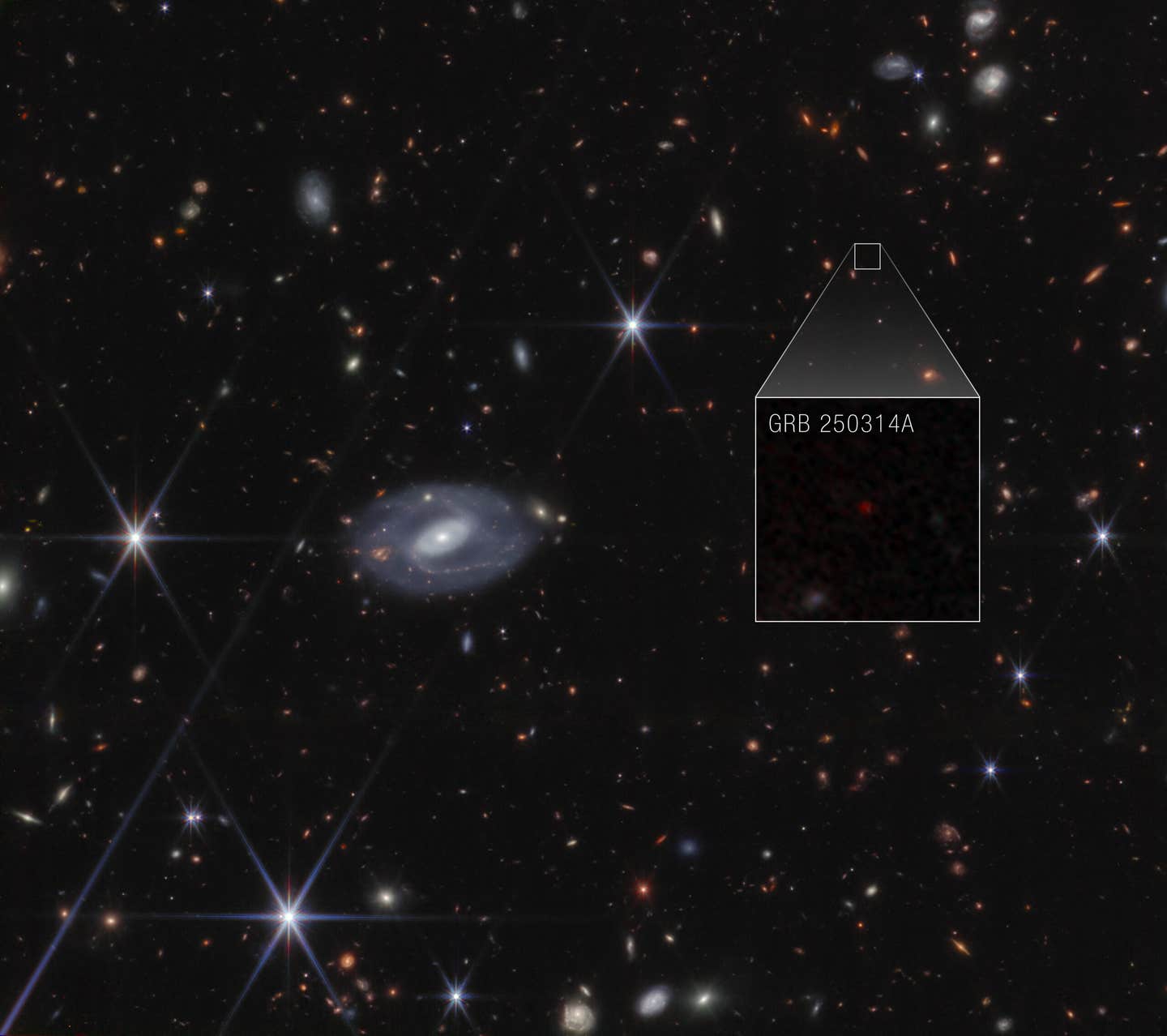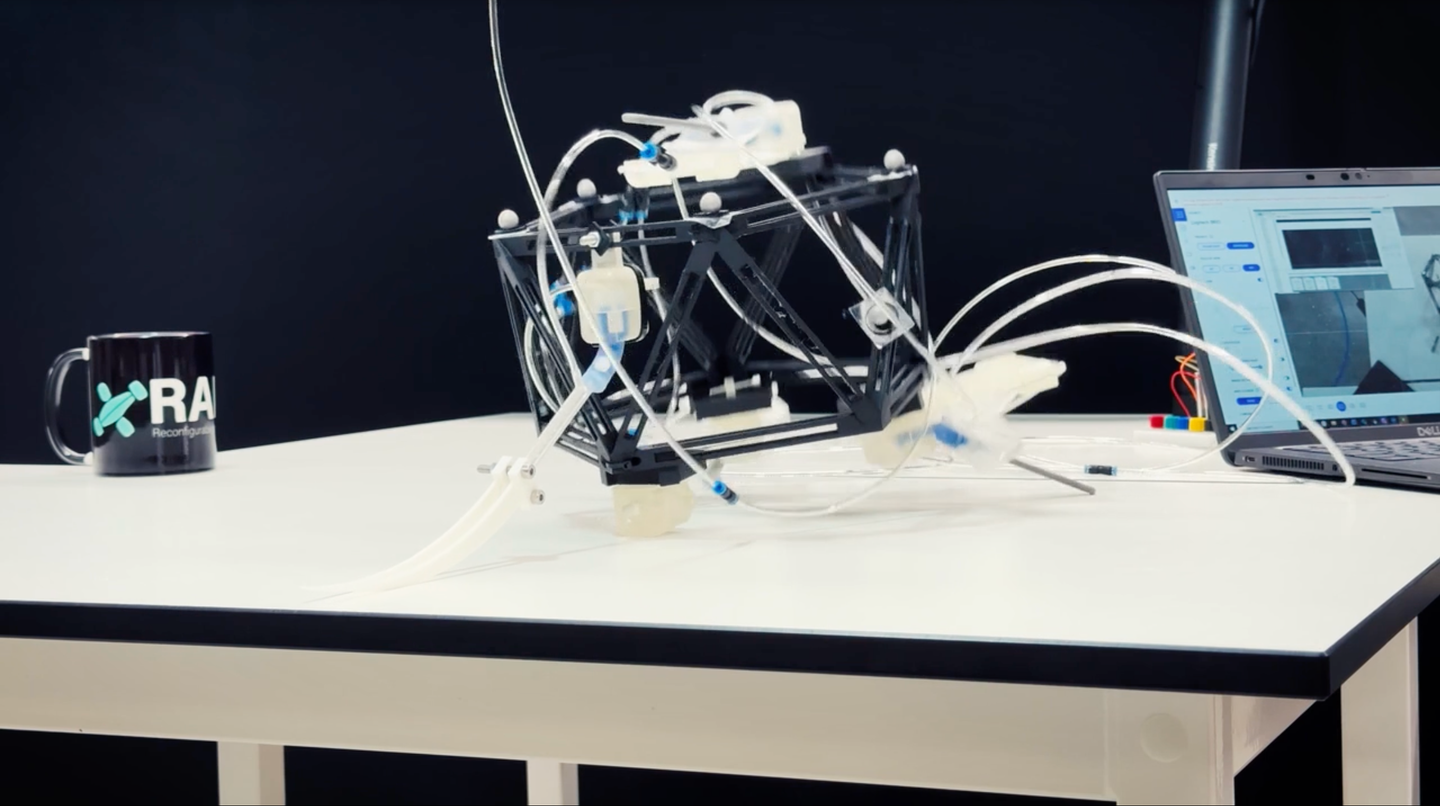Scientists discover the origin of Milky Way’s central supermassive black hole
Supermassive black holes, with masses more than a million times that of our sun, are among the most fascinating and mysterious objects in the universe.

New research offers compelling evidence that Sgr A* could be the result of a past cosmic merger. (CREDIT: NAOJ / CC BY-SA 3.0)
Supermassive black holes, with masses more than a million times that of our sun, are among the most fascinating and mysterious objects in the universe. These behemoths sit at the center of most galaxies, but how they came to be remains largely unknown.
The mystery deepens when you consider the massive black hole at the center of our own Milky Way galaxy—Sagittarius A* (Sgr A*). New research from the Nevada Center for Astrophysics at the University of Nevada, Las Vegas (UNLV), offers compelling evidence that Sgr A* could be the result of a past cosmic merger.
In a study published in Nature Astronomy, UNLV astrophysicists Yihan Wang and Bing Zhang built on recent findings from the Event Horizon Telescope (EHT).
This global collaboration brought together data from eight radio observatories around the world, creating a virtual Earth-sized telescope that captured the first direct image of Sgr A* in 2022. It was a groundbreaking achievement that gave researchers a new lens through which to study this enigmatic supermassive black hole.
Wang and Zhang used the EHT data to investigate how Sgr A* may have formed. Traditionally, astronomers think supermassive black holes grow in one of two ways: by gradually accreting matter over billions of years or by merging with other black holes. For Sgr A*, however, the evidence suggests the latter.
Their study explores various growth models to explain the peculiar spin of Sgr A*. The black hole’s rapid rotation and its misalignment with the overall angular momentum of the Milky Way point to a dramatic event in its history—possibly a merger with another supermassive black hole.
Related Stories
According to Wang, "The misaligned high spin of Sgr A* indicates that it may have merged with another black hole, dramatically altering its amplitude and orientation of spin."
The researchers simulated the effects of different black hole mergers, analyzing how each scenario could align with the spin properties observed by the EHT. They found that a merger with a 4:1 mass ratio and a highly inclined orbital configuration best explains the peculiarities of Sgr A*. This scenario suggests that the black hole formed as a result of a collision with another black hole, possibly from a satellite galaxy.
“This discovery paves the way for our understanding of how supermassive black holes grow and evolve,” Wang said. The team’s findings point to a specific merger event, likely occurring about 9 billion years ago, after the Milky Way collided with a smaller galaxy called Gaia-Enceladus.
Zhang, a distinguished professor at UNLV and director of the Nevada Center for Astrophysics, adds that this event supports the broader theory of hierarchical black hole mergers, offering new insights into the history of the Milky Way.
“This event not only provides evidence of the hierarchical black hole merger theory but also provides insights into the dynamical history of our galaxy,” Zhang explained.
Sgr A* resides more than 27,000 light-years from Earth, making it inaccessible for direct study through conventional means. However, thanks to advanced tools like the Event Horizon Telescope, scientists can now capture images of this supermassive black hole and compare real observations with theoretical predictions.
The research team's findings provide a crucial piece of the puzzle in understanding how black holes evolve and interact with their galactic environments.
Beyond its implications for Sgr A*, the study has broader significance for future black hole research. With tools like the upcoming Laser Interferometer Space Antenna (LISA), scientists may soon have the ability to detect similar mergers across the universe.
LISA, a space-borne gravitational wave detector set to launch in 2035, is designed to pick up signals from supermassive black hole mergers happening far beyond the Milky Way. If LISA detects these mergers, it could further confirm the hierarchical black hole merger theory and offer new insights into the evolution of galaxies.
This new evidence suggests that cosmic mergers are a key mechanism in shaping supermassive black holes like Sgr A*. As our understanding of these enigmatic objects continues to evolve, future observations may confirm that many, if not all, supermassive black holes owe their origins to these extraordinary collisions.
The upcoming launch of LISA and the continued work of ground-based observatories like the EHT will likely uncover even more secrets about how these titanic objects form and grow.
As Zhang highlighted, the research does more than just solve a piece of the puzzle concerning Sgr A*. It opens the door for future exploration and a deeper understanding of how galaxies, and the black holes within them, evolve over cosmic time. With more discoveries on the horizon, we’re just beginning to grasp the profound role that supermassive black hole mergers play in the universe’s grand design.
Note: Materials provided above by The Brighter Side of News. Content may be edited for style and length.
Like these kind of feel good stories? Get The Brighter Side of News' newsletter.



